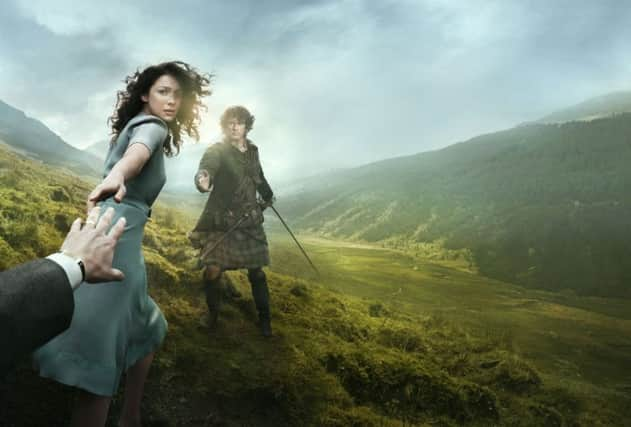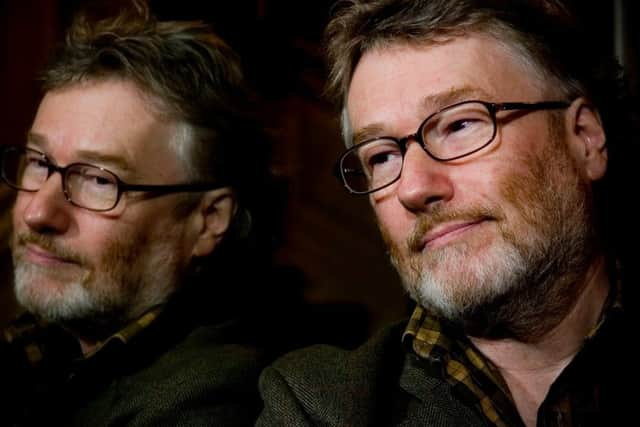Outlander and six other essential sci-fi novels set in Scotland


The Wasp Factory by Iain Banks (1984)
Frank Cauldhame is a young boy who hates women and likes to kill. He lives on a remote island near the fictional Scottish village of Porteneil with his father. Angus, a distant figure. Frank’s older brother, Eric, frees himself from a mental institution and makes his way to Porteneil. The Wasp Factory of the title refers to a contraption Frank uses to predict the future by torturing and killing wasps. Gruesome and bleak, The Wasp Factory is hard to read, and harder to put down. The island setting and the remoteness of the location – and Frank’s mindset – make the story a peculiar sort of sci-fi, one that takes the isolation and strangeness of outer space and applies it to the psyche of a tortured soul.
The Night Sessions by Ken MacLeod (2008)


A blistering takedown of fundamentalism, religious or otherwise, Ken Macleod’s The Night Sessions is set in a near future where a predominantly secular Scotland has marginalised belief systems. Edinburgh-based Detective Inspector Adam Ferguson investigates the death of a bishop, an act of terror which casts the country’s new era of Enlightenment into doubt. “Something very old has risen from the ashes,” says the synopsis of the threat behind the book’s subsequent chain of events, but Macleod’s themes touch on a number of contemporary themes. Another sci-fi police procedural set in Edinburgh by Charlie Stross, Halting State, is worth looking into further, too.
Under The Skin by Michael Faber (2001)
Advertisement
Hide AdAdapted into the critically acclaimed film of the same name starring Scarlet Johansson, Michael Faber’s Under The Skin follows a mysterious woman, Isserley, who roams Scotland’s roads searching for young, fit men. She is attractive and appears human, but her motives are unravelled by Faber as he puts the reader inside the minds of both Isserley and the men she meets. If you’ve seen the film, you know what happens next – but Faber’s prose is as economic as the film. The novel’s themes of eroticism and horror, tangling helplessly into each other, foreground a surprisingly humane message, perhaps the most subversive aspect of Faber’s story.


A History Maker by Alasdair Gray (2005)
In a story of cross-border warfare between Scots and the English, Alasdair Gray’s novel is set in a 23rd century where “the women rule the kingdom and the men play war games.” The history maker of the title is Wat Dryhope, leader of the Ettrick clan, whose innovative manouevre in battle elevates him to hero status and effects a change in the way wars are fought. Described by the Daily Telegraph as “Sir Walter Scott meets Rollerball,” A History Maker’s battles are broadcast to the public, and Gray channels this Orwellian slant with sharp social and political satire of a distinctly Scottish flavour.
Matthew Fitt by But n Ben A-Go-Go (2000)
Written entirely in Scots – both real and imagined – Matthew Fitt’s But n Ben A-Go-Go imagines a post-climate change Scotland submerged in water in the year 2090, presided over by a totalitarian state. Only the Highlands – now known as the Drylands – survive, but global warming has exacted a terrible price on what remains of the Earth. The population, living on oil rig platform-like cities called parishes, cannot go outside without extensive sun protection. Parish-dwellers cannot have sex; lovers can only be intimate in the virtual world. Paolo Broon’s wife catches an HIV-virus that can only be caught by physical contact; heartbroken by Nadia’s infidelity, he nevertheless seeks a cure to rescue her from her forced entombment. A novel of outstanding vision.
Outlander by Diana Gabaldon (1991 - 2014)
Outlander may seem like a recent phenomenon – thanks to its hugely successful TV show – but the first of an eight-part series was published in 1991. The world Diana Gabaldon’s characters inhabit is subtly realised. By inserting time-travelling Claire Randall as a proxy for a readers’ view of 18th century Scotland, she places us in that world and on the periphery of it all at once. An English nurse who goes on holiday to Inverness to rekindle her relationship with her husband after the end of World War II, Randall touches some standing stones and finds herself in the middle of a battle happening in 1743. More than the science fiction aspect, what really drives the novels is Randall’s deepening relationship with Jamie Fraser, one of her only allies among a clan who suspect of her of being an English spy.
Lanark by Alasdair Gray (1981)
It would be a stretch to call Lanark a sci-fi novel in the conventional sense, but then nothing about one of Scotland’s literary masterworks is. Divided in two, the novel jumps between pre-war Glasgow and a parallel dystopia called Unthank, a place whose mysteries also resonate with deeply personal pain. Written over a period of three decades, Alasdair Gray’s debut novel is a story of epic scope and imagination, which has become a touchstone for Scottish literature. It excavates the psyche of a modern Scottish city in a way no other novel had. Comparisons with Dante, Blake, Joyce, and Kafka should tell you the esteem in which readers hold this novel.
